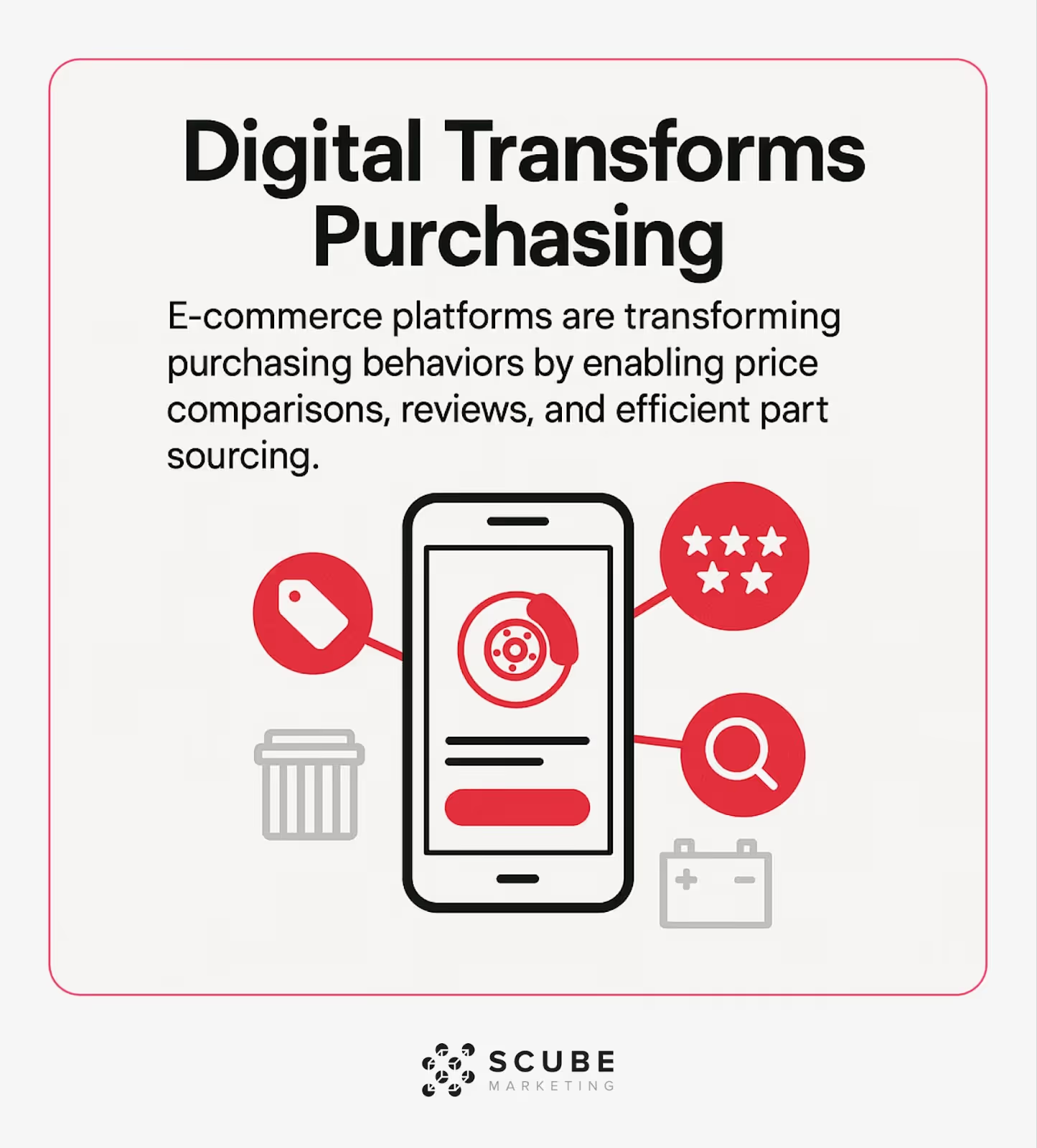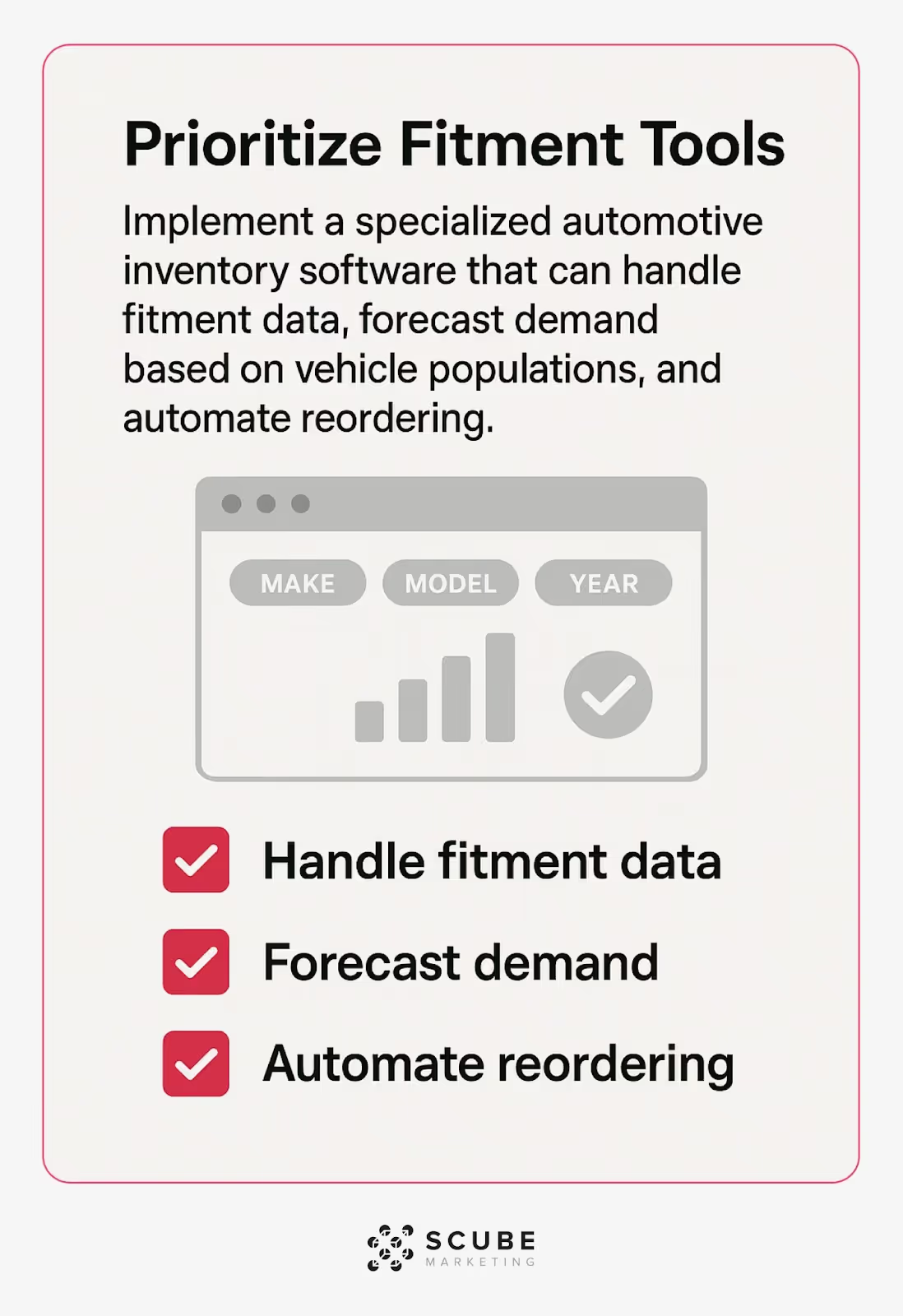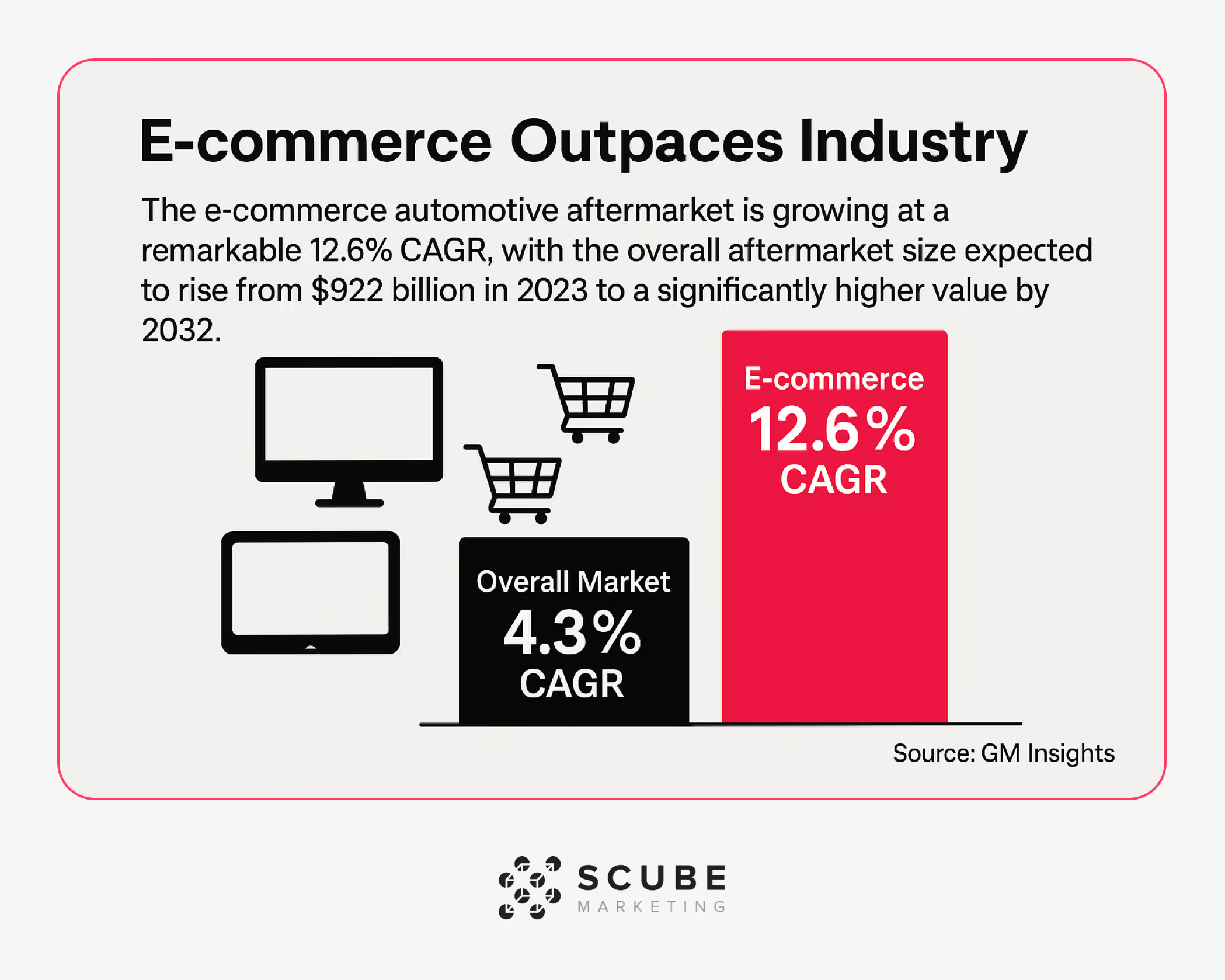
The automotive aftermarket is undergoing a significant transformation. Traditional distribution channels are evolving as more businesses adopt direct-to-consumer (DTC) models to reach customers. As a marketing professional who helps e-commerce businesses optimize their digital strategies, I've observed this shift's profound impact on the industry.
Gone are the days when automotive parts were sold exclusively through physical stores or specialized distributors. Today's consumers expect convenience, comprehensive product information, and seamless shopping experiences—expectations that perfectly align with the DTC model.
In this article, I'll explore how the DTC approach is reshaping the automotive aftermarket, the key benefits it offers to both businesses and consumers, the challenges you might face, and practical strategies to implement a successful DTC model for your automotive aftermarket business.
.avif)
The automotive aftermarket represents a massive and growing sector of the global economy. The global automotive aftermarket was valued at $499.4 billion in 2024 and is projected to reach $641.8 billion by 2030, growing at a compound annual growth rate (CAGR) of 4.3%. (Source: GlobeNewswire)
This growth reflects the increasing age of vehicles on the road, rising consumer awareness about vehicle maintenance, and the expanding global automotive fleet. However, the most significant driver of change isn't just market size—it's how products are being sold and distributed.
Traditionally, the automotive aftermarket operated through a multi-tiered distribution system. Manufacturers produced parts, distributors purchased in bulk, retailers or repair shops bought from distributors, and finally, consumers could purchase parts. This model served the industry well for decades. But digital transformation and changing consumer expectations have created opportunities for a more direct approach.
Let's examine how the traditional and DTC models compare in the automotive aftermarket:
The table highlights the fundamental differences between these models. The DTC approach offers several advantages that are particularly valuable in today's digital-first marketplace.
Several factors are driving the rapid adoption of DTC models in the automotive aftermarket. Understanding these drivers can help businesses better position themselves to capitalize on this trend.
Today's automotive parts consumers are increasingly comfortable with online shopping. They research extensively before purchasing and value convenience above all. The DIFM (Do-It-For-Me) channel is projected to drive significant growth due to increasing vehicle complexity, particularly in newer and electric vehicles. (Source: TMCapital)
This shift isn't surprising. When consumers need replacement parts or want to upgrade their vehicles, they're looking for:
DTC models excel at providing these elements, making them increasingly attractive to automotive consumers.

E-commerce platforms are transforming purchasing behaviors by enabling price comparisons, reviews, and efficient part sourcing. This digital transformation offers significant advantages to both sellers and buyers.
For Aftermarket Businesses:
For Consumers:
The following table illustrates the key drivers of DTC growth in the automotive aftermarket:
These drivers collectively create a compelling case for aftermarket businesses to adopt or expand DTC strategies. But how exactly should you go about implementing such a strategy? Let's explore the key components.
Implementing a DTC strategy in the automotive aftermarket requires careful planning and execution. Here are the essential components to consider:
Your e-commerce platform forms the foundation of your DTC strategy. The right platform should offer:
For automotive parts businesses, platforms with specific compatibility tools are particularly valuable. These help customers find the exact parts that fit their vehicles, reducing returns and improving satisfaction.
In the automotive aftermarket, precise and comprehensive product information is critical. Customers need to know exactly which parts fit their specific vehicles. A robust auto parts inventory management system should include:
Detailed product specifications, compatibility information, high-quality images from multiple angles, installation guides or videos, and OEM cross-references all help build customer confidence. The more information you provide, the more confident customers will feel making a purchase without seeing the physical product.
Pricing in DTC requires balancing several factors: competitive market rates, the value of convenience and information you provide, shipping costs, and margin requirements. Many successful DTC aftermarket businesses offer competitive pricing made possible by eliminating middlemen, while emphasizing the added value of their expertise, warranty support, and customer service.
Efficient order fulfillment is essential for customer satisfaction in the automotive aftermarket. For heavy or oversized automotive parts, shipping logistics become even more critical to manage costs while meeting customer expectations.
The following table provides a checklist for implementing a DTC strategy in the automotive aftermarket:
With these components in place, you're ready to focus on the marketing strategies that will drive traffic and conversions to your DTC channel.
Marketing effectively is crucial to the success of any DTC strategy. For automotive aftermarket businesses, these specific approaches can drive significant results:
SEO is particularly valuable for automotive parts due to the highly specific nature of customer searches. How can automotive businesses effectively optimize their online product listings? Effective strategies include vehicle-specific keywords, part number optimization, technical content that addresses common problems and solutions, and schema markup for rich product results.
Selling auto parts online requires a different SEO approach than general e-commerce. The specificity of fitment information and technical details creates opportunities for highly targeted content.
PPC campaigns allow you to target customers with high purchase intent. For automotive aftermarket businesses, consider:
Our experience with automotive and motorsport businesses shows that highly specific targeting often delivers the best ROI for aftermarket parts.
While not traditionally associated with automotive parts, social platforms offer unique opportunities for aftermarket brands. Visual platforms work particularly well for performance or aesthetic modifications that have a visible impact on vehicles.
Email remains one of the most effective channels for DTC businesses. Automotive email marketing performs best when it delivers genuinely helpful information alongside promotional content.
The following table compares the effectiveness of different marketing channels for automotive aftermarket DTC businesses:
A well-rounded marketing strategy will incorporate elements from each of these channels, with emphasis placed according to your specific products and target audience.
While the DTC model offers many advantages, it also presents unique challenges for automotive aftermarket businesses. Let's examine these challenges and practical solutions:

The automotive parts inventory is particularly complex due to the vast number of SKUs, fitment variations, and the need to maintain stock for both fast and slow-moving parts. Implement a specialized automotive inventory software that can handle fitment data, forecast demand based on vehicle populations, and automate reordering. These systems can significantly reduce carrying costs while maintaining high availability.
Automotive parts often require technical knowledge for selection and installation, traditionally provided by counter professionals or mechanics. Create comprehensive online resources including video installation guides, interactive fitment tools, live chat with technical specialists, detailed FAQ sections for common issues, and community forums for peer support.
Newer DTC brands may struggle to compete with established names that consumers already trust for critical vehicle components. Studies show that certified parts are gaining significant traction as consumers increasingly value quality and reliability over uncertified alternatives. (Source: Market.us)
Build credibility through transparent policies around returns and warranties, prominently featured customer reviews and testimonials, expert content that demonstrates knowledge, and clear communication about quality testing and standards.
Automotive parts can be heavy, bulky, and expensive to ship, potentially eroding the price advantage of DTC. Consider these approaches:
The table below summarizes common challenges and their solutions:
Addressing these challenges proactively will strengthen your DTC operation and position your business for long-term success in the evolving automotive aftermarket.
The automotive aftermarket continues to evolve rapidly. Understanding emerging trends can help businesses prepare for future opportunities and challenges:
The growth of electric vehicles is creating new aftermarket opportunities. According to market research, the global automotive aftermarket growth is being influenced by regional vehicle preferences and emerging vehicle technologies, with significant increases expected in both traditional ICE and electric vehicle segments. (Source: Lincoln International)
For DTC businesses, this presents opportunities to develop expertise in EV-specific products, create content addressing common EV maintenance questions, stock parts for the most popular EV models, and offer specialized tools for EV maintenance and repair.
Advances in technology are enabling greater product personalization. These developments create opportunities for premium pricing and stronger customer relationships through customized offerings.
Artificial intelligence is transforming the aftermarket in several ways:
These technologies can significantly improve the customer experience while reducing operational costs.

The e-commerce automotive aftermarket is growing at a remarkable 12.6% CAGR, with the overall aftermarket size expected to rise from $922 billion in 2023 to a significantly higher value by 2032. (Source: GM Insights)
This growth rate, significantly higher than the overall aftermarket growth, demonstrates the shift toward online purchasing and DTC channels. Businesses that invest in DTC capabilities now will be better positioned to capture this growth.
The future of automotive aftermarket isn't purely online or offline, but a seamless integration of both. These hybrid approaches combine the convenience of online shopping with the hands-on support many customers still value.

The rise of direct-to-consumer (DTC) in the automotive aftermarket represents a fundamental shift in how parts and accessories reach consumers. This trend is driven by changing consumer expectations, digital transformation, and the significant benefits the model offers to both businesses and customers.
To succeed in this evolving landscape, aftermarket businesses should:
The businesses that embrace these changes and build customer-centric DTC operations will be well-positioned to thrive in the growing automotive aftermarket. The transition may require significant investment and organizational change, but the potential rewards in terms of growth, margins, and customer relationships make it well worth the effort.
If you're considering developing or enhancing your DTC strategy for automotive aftermarket products, start by evaluating your current digital capabilities and identifying the highest-impact improvements. Even small steps toward a more direct relationship with your customers can yield significant benefits in today's rapidly evolving marketplace.